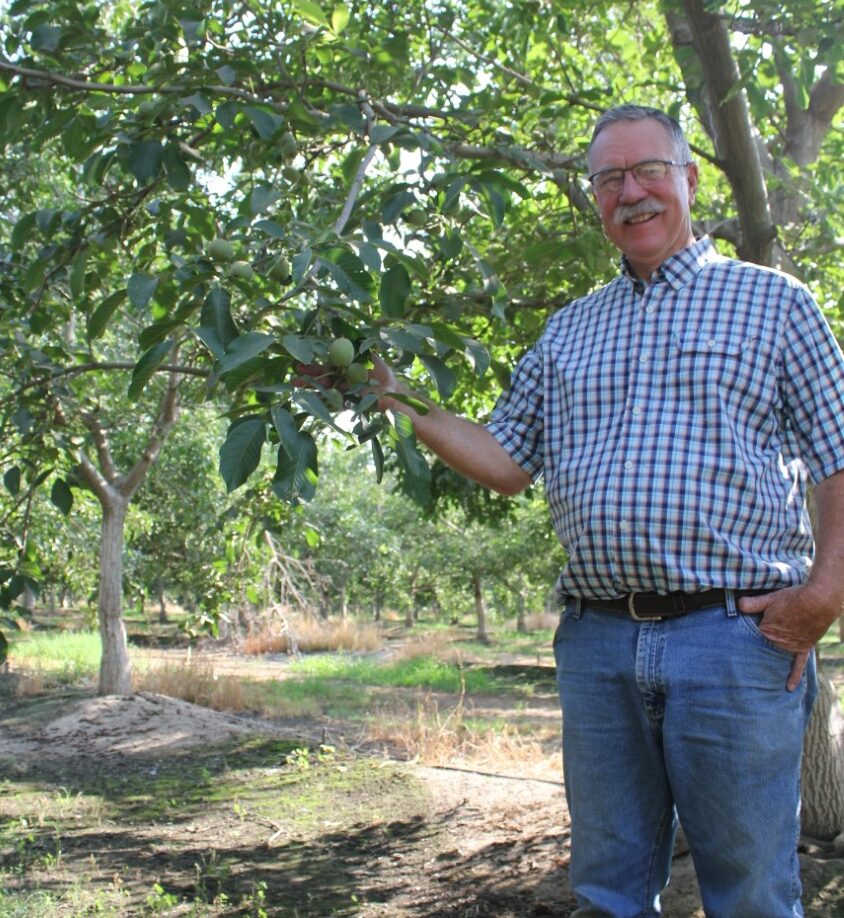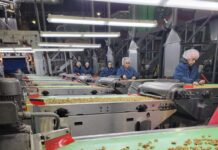
September is an interesting month for a California walnut grower.
Orchards have been irrigated and fertilized all summer to maximize production. Pests and weeds have been controlled and the trees are now heavy with a crop. Harvest equipment is ready and waiting for drivers. Growers are waiting for the right time to begin.
1. Walnut Prices
Poised to begin another harvest, growers are hopeful that the nut quality and yields they worked so hard to achieve this year will be rewarded with good prices, those that will cover their costs of production.
“We are literally at the bottom of the well” is how longtime Farmersville area walnut grower Gary Hester describes September. That is the first thing on his mind.
“We’ve spent money all winter and spring to bring in this crop. We are at the bottom of the well. We are looking forward to better commodity prices for this crop.”
Hester and his wife, Anne, are fourth-generation farmers in Tulare County. They grow walnuts and also harvest, hull and dry walnuts for other growers and ship them to buyers as requested by the grower. Orchard pruning is another service they provide.
Before this harvest begins, Hester said, they are working with what returns are left over from the previous year and looking forward to the returns from selling this year’s crop.
2. Market Stability
Stability in walnut prices, how to meet financial commitments until the crop is sold, labor availability and planning for next year round out Hester’s concerns this year.
Stability in walnut prices going forward or, better yet, improvement in next year’s prices would help growers with making planting or orchard removal decisions, he said.
“Costs for everything, labor, fuel, equipment, is going up, and we don’t have the option of going back and not farming. It is no secret we’re experiencing poor times in the walnut industry.”
Hester said growers do not have the ability to affect the market prices. Many other factors affect the market, including global issues.
“You learn to be a survivor and plan ahead.”
When walnut prices were strong three years ago, he said they invested in infrastructure. Their big investments were new wells that they believed would be needed in the future.
3. How to Pay Bills
Establishing a cash reserve or a line of credit would allow growers to functionally pay the bills until the returns from the next crop come in, Hester said. Vendors and employees need to be paid.
Even if cash reserves are available this time of the year, he said he has to budget and allocate money where it pays off. Spending on new equipment is not an option.
4. Labor Availability
Hester said he is also concerned about labor availability going into this year’s harvest.
He employs about 14 people year-round maintaining equipment and machinery along with orchard maintenance. Those 14 are key moving into harvest. During harvest and hulling and drying, Hester said he needs 70 to 80 employees to keep the operation moving smoothly. Lack of drivers, he said, can bring the harvest to a halt. Lack of skilled machinery operators can be a safety hazard.
“There is a finite timeline in walnut harvest. We need to pick the nuts up off the ground the day after shaking. It is critical to have enough employees to keep the harvest going, picking up nuts in a timely manner and to operate machinery safely.”
He is concerned that his labor force will not be adequate this year.
Hester said he normally has about 60 to 70 applications for work on file by August 1. This year, he is only averaging about six applications a week.
5. The Future
Hester estimates that this year’s harvest will begin early September with Ivanhoe followed next by Serr. This starting date falls in the time slot of the Ashley and Payne varieties.
“We have seen multiple generations of walnuts,” Hester said. Chandler has taken the center stage in walnut production now, but Hester said those earlier walnut varieties were productive for many years and brought good prices.
What varieties will be planted next? Serrs were a staple walnut variety in the Central Valley for many years, Hester said, but they are being removed because growers are getting lower returns.
“No one is planting Serrs or Paynes because they can’t command premium prices,” he added.
Spreading out the harvest window is a desirable, Hester said; however, the grower must stay focused on the net return of the orchard and let the harvest services deal with the demand on timely harvest. Consideration of a variety in your area that will net you the returns is necessary to farm in today’s conditions. That will involve the normal review of soil issues, water availability, etc.










